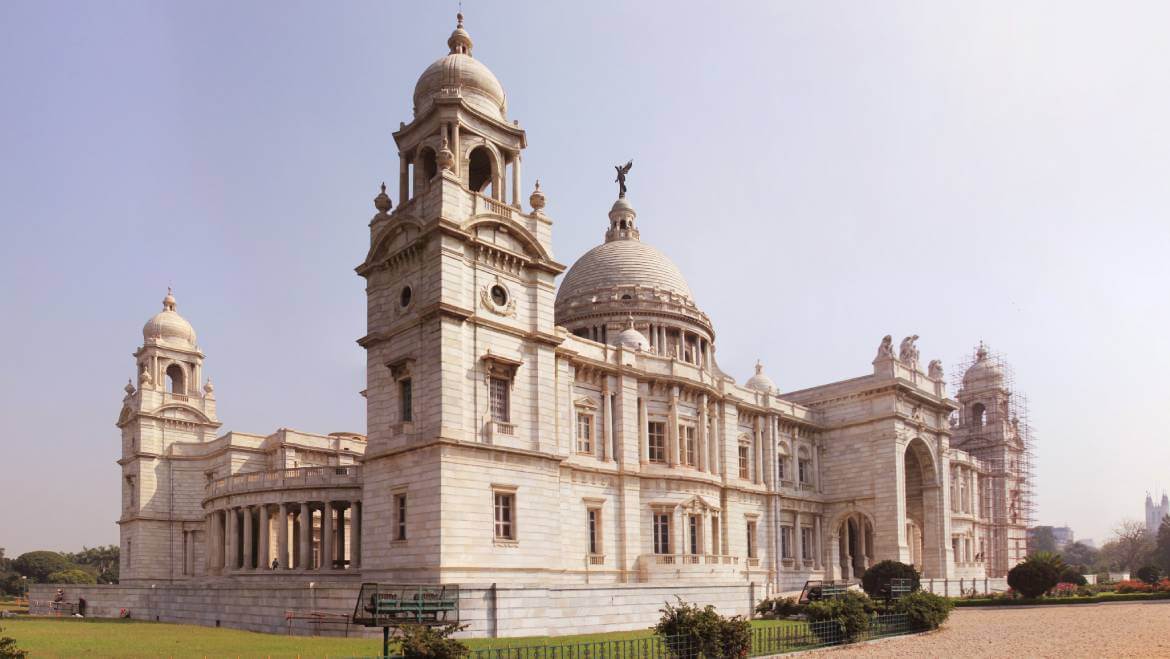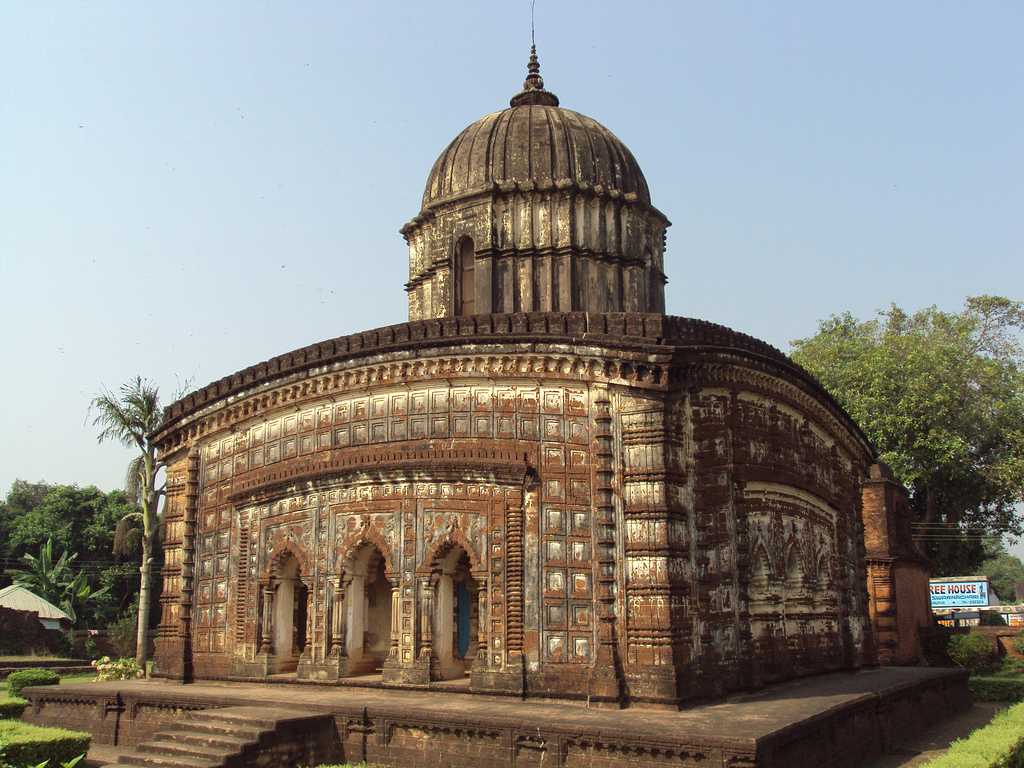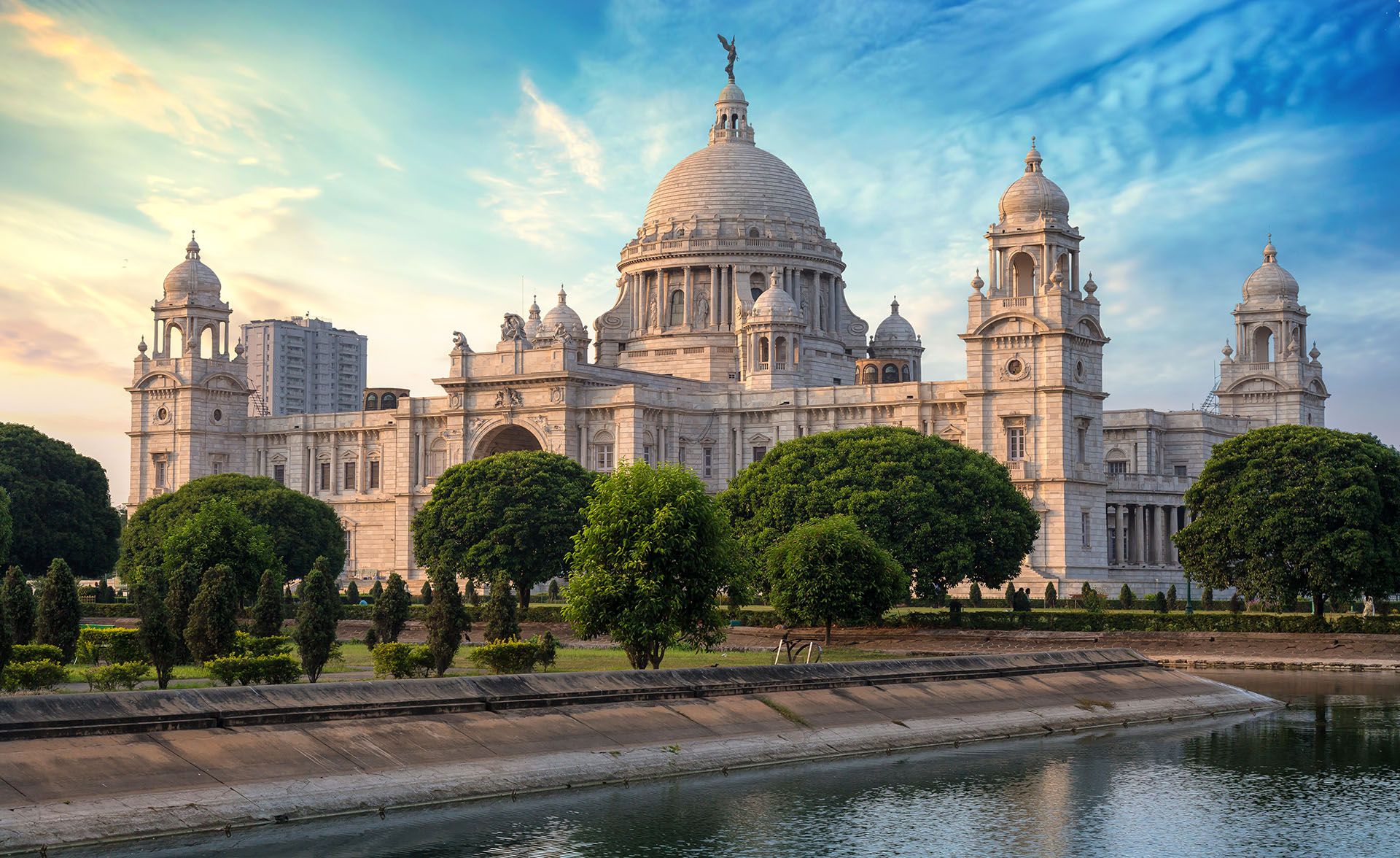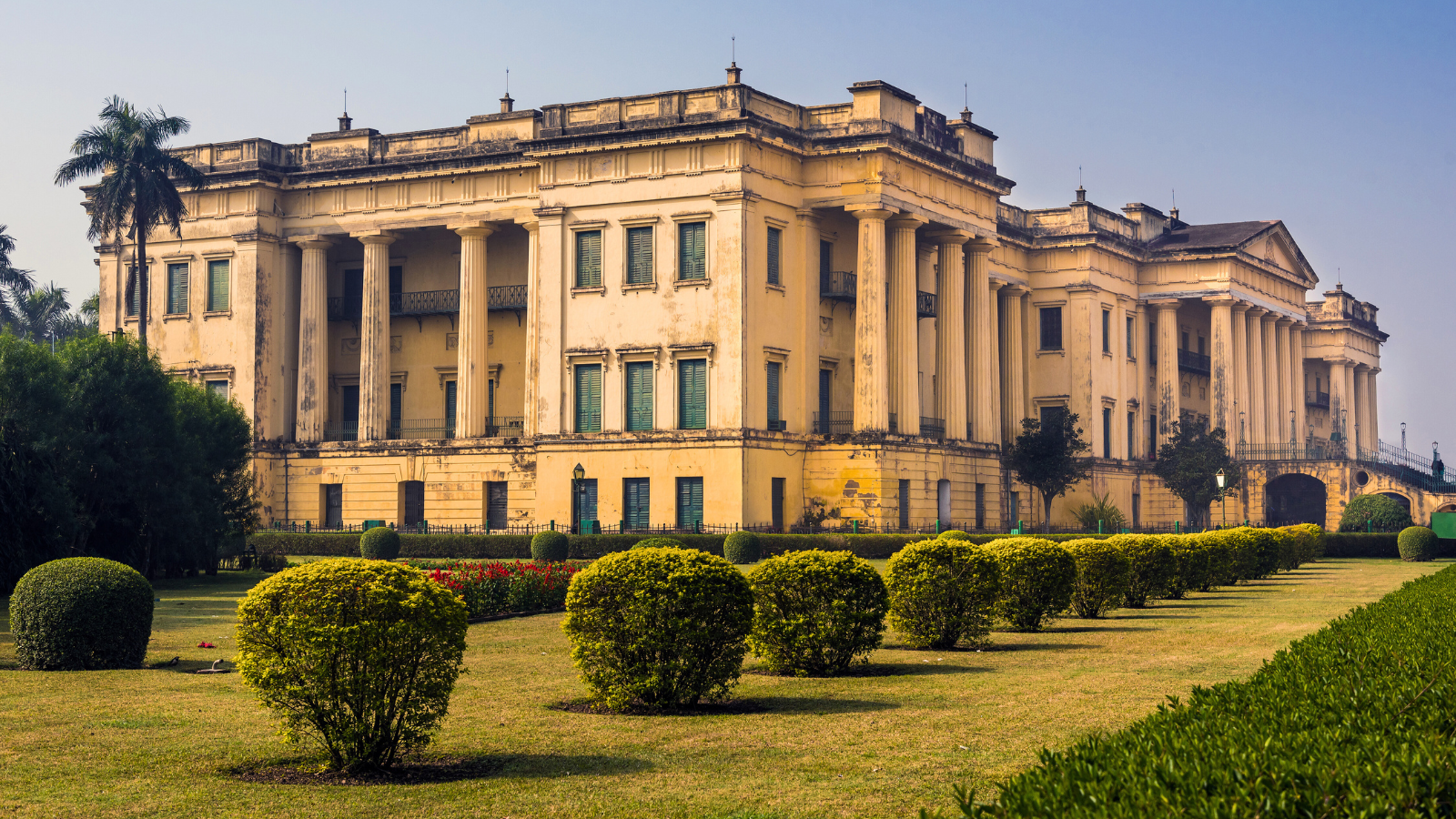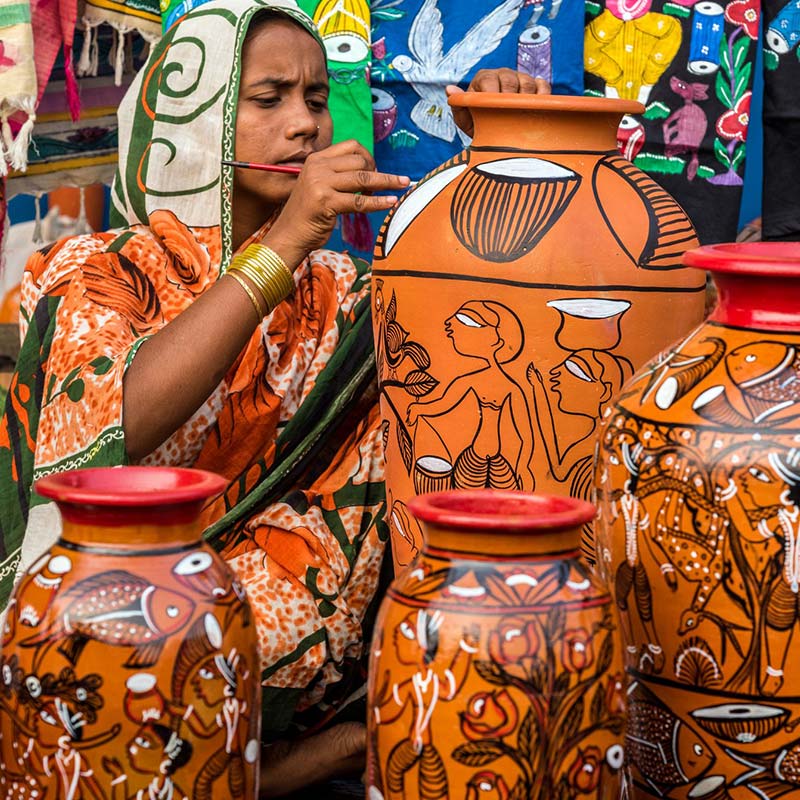4Nights 5 Days View offer details
4N/5D accommodation Stay valid all days except peak season. Half day city tour Paying for food Is compulsory and it includes unlimited dinner and breakfast. 7 days prior booking should be confirmed.
Validity : All days
6 Nights 7 Days View offer details
6N/7D accommodation Stay valid all days except peak season. Half day city tour Paying for food Is compulsory and it includes unlimited dinner and breakfast. 7 days prior booking should be confirmed.
Validity : All Days
No OFFER AVILABLE AT THIS TIME.
........
- Overviews
- Amenities
- FAQ
West Bengal is situated in eastern India and shares its borders with Jharkhand, Bihar, Odisha, Sikkim, and Assam. The state also shares international borders with Bangladesh, Bhutan, and Nepal. The Bay of Bengal is in the south of West Bengal.
West Bengal, India’s sixth largest state in terms of economic size, has a projected Gross State Domestic Product (GSDP) of 17.19 trillion (US$ 208.24 billion) in 2023-24. The average annual GSDP is estimated to increase at 9.29% from 2018-19 to 2023-24BE.
In FY23, the total exports from the state stood at US$ 12.74 billion. West Bengal exported key items such as iron & steel and marine products. During 2018-19, the state produced a total of 1.85 million tonnes of fish.
West Bengal is the second largest tea-producing state in India and is home to the globally acclaimed Darjeeling tea variety. West Bengal is the largest producer of rice in India. Rice production for the state totalled 13.32 million tonnes in 2021-22.
Its location advantage makes the state a traditional market for eastern India, the Northeast, Nepal, and Bhutan. It is also a strategic entry point for markets in Southeast Asia. The cost of operating a business is lower in Kolkata than in other metropolitan cities.
West Bengal has abundant natural resources of minerals and suitable agro-climatic conditions for agriculture, horticulture, and fisheries. It is in vicinity to mineral rich states like Jharkhand, Bihar, and Odisha. It offers excellent connectivity to the rest of India in terms of railways, roadways, ports, and airports.
West Bengal is situated in eastern India and shares its borders with Jharkhand, Bihar, Odisha, Sikkim, and Assam. The state also shares international borders with Bangladesh, Bhutan, and Nepal. The Bay of Bengal is in the south of West Bengal.
West Bengal, India’s sixth largest state in terms of economic size, has a projected Gross State Domestic Product (GSDP) of 17.19 trillion (US$ 208.24 billion) in 2023-24. The average annual GSDP is estimated to increase at 9.29% from 2018-19 to 2023-24BE.
In FY23, the total exports from the state stood at US$ 12.74 billion. West Bengal exported key items such as iron & steel and marine products. During 2018-19, the state produced a total of 1.85 million tonnes of fish.
West Bengal is the second largest tea-producing state in India and is home to the globally acclaimed Darjeeling tea variety. West Bengal is the largest producer of rice in India. Rice production for the state totalled 13.32 million tonnes in 2021-22.
Its location advantage makes the state a traditional market for eastern India, the Northeast, Nepal, and Bhutan. It is also a strategic entry point for markets in Southeast Asia. The cost of operating a business is lower in Kolkata than in other metropolitan cities.
West Bengal has abundant natural resources of minerals and suitable agro-climatic conditions for agriculture, horticulture, and fisheries. It is in vicinity to mineral rich states like Jharkhand, Bihar, and Odisha. It offers excellent connectivity to the rest of India in terms of railways, roadways, ports, and airports.
West Bengal is situated in eastern India and shares its borders with Jharkhand, Bihar, Odisha, Sikkim, and Assam. The state also shares international borders with Bangladesh, Bhutan, and Nepal. The Bay of Bengal is in the south of West Bengal.
West Bengal, India’s sixth largest state in terms of economic size, has a projected Gross State Domestic Product (GSDP) of 17.19 trillion (US$ 208.24 billion) in 2023-24. The average annual GSDP is estimated to increase at 9.29% from 2018-19 to 2023-24BE.
In FY23, the total exports from the state stood at US$ 12.74 billion. West Bengal exported key items such as iron & steel and marine products. During 2018-19, the state produced a total of 1.85 million tonnes of fish.
West Bengal is the second largest tea-producing state in India and is home to the globally acclaimed Darjeeling tea variety. West Bengal is the largest producer of rice in India. Rice production for the state totalled 13.32 million tonnes in 2021-22.
Its location advantage makes the state a traditional market for eastern India, the Northeast, Nepal, and Bhutan. It is also a strategic entry point for markets in Southeast Asia. The cost of operating a business is lower in Kolkata than in other metropolitan cities.
West Bengal has abundant natural resources of minerals and suitable agro-climatic conditions for agriculture, horticulture, and fisheries. It is in vicinity to mineral rich states like Jharkhand, Bihar, and Odisha. It offers excellent connectivity to the rest of India in terms of railways, roadways, ports, and airports.
West Bengal is situated in eastern India and shares its borders with Jharkhand, Bihar, Odisha, Sikkim, and Assam. The state also shares international borders with Bangladesh, Bhutan, and Nepal. The Bay of Bengal is in the south of West Bengal.
West Bengal, India’s sixth largest state in terms of economic size, has a projected Gross State Domestic Product (GSDP) of 17.19 trillion (US$ 208.24 billion) in 2023-24. The average annual GSDP is estimated to increase at 9.29% from 2018-19 to 2023-24BE.
In FY23, the total exports from the state stood at US$ 12.74 billion. West Bengal exported key items such as iron & steel and marine products. During 2018-19, the state produced a total of 1.85 million tonnes of fish.
West Bengal is the second largest tea-producing state in India and is home to the globally acclaimed Darjeeling tea variety. West Bengal is the largest producer of rice in India. Rice production for the state totalled 13.32 million tonnes in 2021-22.
Its location advantage makes the state a traditional market for eastern India, the Northeast, Nepal, and Bhutan. It is also a strategic entry point for markets in Southeast Asia. The cost of operating a business is lower in Kolkata than in other metropolitan cities.
West Bengal has abundant natural resources of minerals and suitable agro-climatic conditions for agriculture, horticulture, and fisheries. It is in vicinity to mineral rich states like Jharkhand, Bihar, and Odisha. It offers excellent connectivity to the rest of India in terms of railways, roadways, ports, and airports.
1. Pickup and Drop-off Services
- Airport/Railway Station Transfers
2. Local Transportation
- Sightseeing in Sedan Car
3.. Accommodation
- Hotels
4. Meals
Daily Breakfast
- Lunch or Dinner
5. Tour Guide
- Professional Guides
- Language Options
6. Sightseeing Tours
- Itinerary
7. Cultural Experiences
- Local Performances
8. Assistance and Support
- 24/7 Assistance
Frequently Asked Questions?
-
9. Is West Bengal safe for tourists?
West Bengal is generally safe for tourists, but it's essential to take standard precautions: Safety: Exercise caution in crowded areas, avoid isolated areas at night, and keep valuables secure. Health: Drink bottled or boiled water, eat at clean establishments, and be mindful of hygiene practices. Local Customs: Respect local customs, dress modestly in religious sites, and ask for permission before taking photographs of people.
-
8. What should I pack for a trip to West Bengal?
Pack according to the specific destinations and activities planned: Clothing: Lightweight and breathable clothes for Kolkata, warm layers for Darjeeling, and comfortable attire for jungle safaris. Footwear: Comfortable walking shoes, hiking boots for hill stations, and flip-flops for beach areas. Essentials: Sunscreen, insect repellent, hats, sunglasses, and a raincoat or umbrella, especially during the monsoon season. Medications: Carry any necessary medications and a basic first aid kit.
-
7. Do I need any permits to visit certain areas?
Permits may be required for certain restricted areas or protected regions: Sikkim: Indian tourists need an Inner Line Permit (ILP) to enter Sikkim, which can be obtained online or at designated offices. Restricted Areas: Some parts of the Sundarbans and border regions may require special permits, arranged by tour operators.
-
6. How do I travel within West Bengal?
Transportation options within West Bengal include: Public Transport: Buses, trams, and the Kolkata Metro for intra-city travel. Private Taxis: Widely available for inter-city journeys and sightseeing tours. Toy Train: Experience the heritage Darjeeling Himalayan Railway for scenic rides. Boat Services: For exploring riverine areas like the Sundarbans.
-
5. What activities can I do in West Bengal?
West Bengal offers a range of activities to suit every traveler: Sightseeing: Explore historical landmarks, religious sites, and natural wonders. Cultural Experiences: Attend festivals, visit museums, and witness traditional performances. Adventure: Trekking in the Himalayas, river rafting in Teesta, and wildlife safaris in the Sundarbans. Culinary Exploration: Indulge in Bengali cuisine, street food, and tea tasting in Darjeeling.
-
4. Is it necessary to hire a tour guide?
While not mandatory, hiring a tour guide can enhance your experience by providing valuable insights into the history, culture, and significance of each destination. Guides are particularly beneficial for exploring historical sites, understanding local customs, and navigating bustling markets.
-
3. What kind of accommodations are available in West Bengal?
Accommodation options in West Bengal cater to various budgets and preferences: Hotels: Ranging from budget to luxury, available in cities like Kolkata and Darjeeling. Homestays: Offering an authentic local experience, especially in rural areas and hill stations. Resorts: Located amidst nature in places like the Sundarbans and Darjeeling.
-
10. What is the currency and language used in West Bengal?
Currency: Indian Rupee (INR) Language: Bengali is the official language, but English and Hindi are widely understood, especially in tourist areas.
-
1. What is the best time to visit West Bengal?
The best time to visit West Bengal depends on the specific destinations you plan to explore: Kolkata: October to March is ideal, with pleasant weather for sightseeing. Darjeeling and the Hills: Spring (March to May) and autumn (September to November) offer clear skies and comfortable temperatures. Sundarbans: October to March is recommended, avoiding the monsoon season when the area is prone to flooding.
-
2. What are the must-visit places in West Bengal?
West Bengal offers a diverse range of attractions: Kolkata: Victoria Memorial, Howrah Bridge, Dakshineswar Kali Temple, and the Indian Museum. Darjeeling: Tiger Hill, Batasia Loop, Darjeeling Himalayan Railway, and tea gardens. Sundarbans: Mangrove forests, wildlife sanctuaries, and boat safaris. Gangtok (Sikkim): Tsomgo Lake, Rumtek Monastery, and Nathula Pass.
